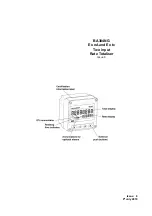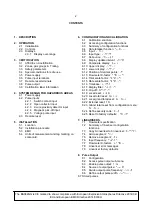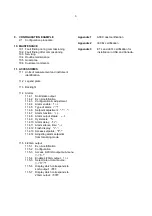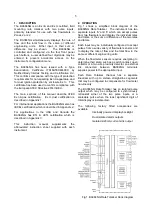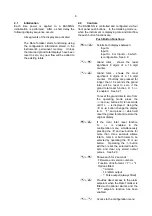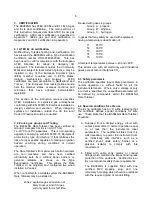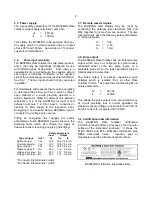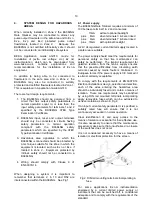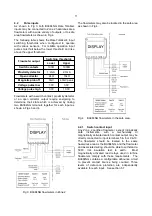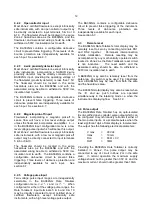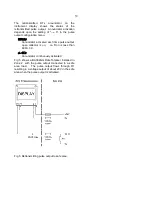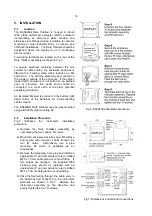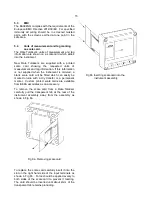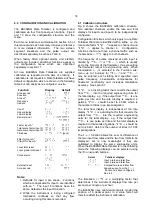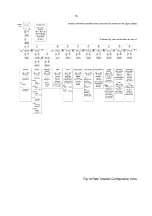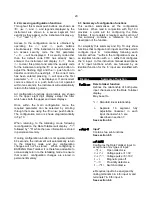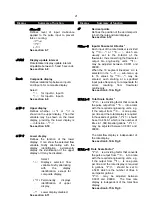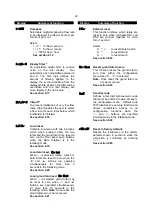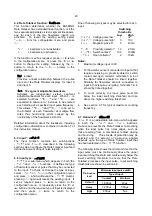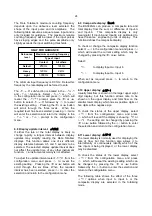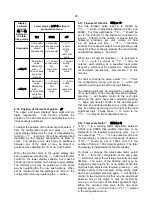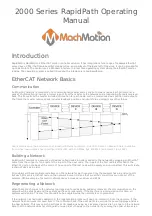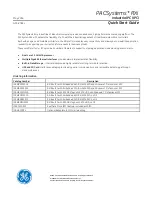
10
4.
SYSTEM DESIGN FOR HAZARDOUS
AREAS.
When correctly installed in Zone 2 the BA384NG
Rate Totaliser may be connected to almost any
pulse output flowmeter in the safe area and to Ex n,
Ex e, Ex p and Ex d protected pulse output
flowmterers located in Zone 2. Because the
BA384NG is not certified intrinsically safe it should
not be connected to an intrinsically safe system.
BEKA Application Guide AG310,
Guide for
Installation of [extra low voltage d.c.] Ex nA
instrumentation
, which can be downloaded from
www.beka.co.uk, contains explanations and
recommendations for the installation of Ex nA
equipment.
In addition to being able to be connected to
flowmeters in the safe area and in Zone 2, the
BA384NG may also be connected to suitably
protected and certified flowmeters located in Zone 1.
This is explained in Application Guide AG310.
There are four design requirements:
1. The BA384NG should be powered from a
circuit that has output safety parameters in
normal operation equal to, or less than, the
input safety parameters for terminals 1 and 2
specified by the BA384NG ATEX Type
Examination Certificate.
2. BA384NG input, reset and output terminals
should only be connected to circuits having
safety parameters in normal operation
compliant with the BA384NG safety
parameters which are specified by the ATEX
Type Examination Certificate.
3. Hazardous area apparatus to which the
BA384NG is connected should be protected by
a technique suitable for the Zone in which the
equipment is located, such as Ex n or Ex e if
located in Zone 2. Equipment protected by
intrinsic safety should not be connected to a
BA384NG.
4. Wiring should comply with Clause 9 of
EN 60079-14.
When designing a system it is important to
remember that terminals 2, 6, 10 and RS2 are
interconnected within the BA384NG. See Fig 1.
4.1 Power supply
The BA384NG Rate Totaliser requires a minimum of
10V between terminal 1 & 2 and consumes:
10mA
without optional backlight
plus
6mA
when terminals 3 & 4 are linked
plus
6mA
when terminals 7 & 8 are linked
plus 16mA
with optional backlight
A 24V dc regulated, current limited supply located in
a safe area is suitable.
The power supply should meet the requirements for
personnel safety so that ‘live maintenance’ can
safely be performed. The implicit requirement for
galvanic isolation from the mains supply ensures
that the possible difficulties from circulating earth
currents caused by mains faults is minimised. In
European terms if the power supply is CE marked it
is almost certainly acceptable.
To comply with the requirements of EN 60079:14
Electrical installations design, selection and erection
,
each of the wires entering the hazardous area
should be individually fused and contain a means of
isolation. These two requirements may be satisfied
by using DIN rail mounted terminals incorporating
easily removable fuses which can be extracted to
achieve isolation as shown in Fig 2.
If an input current safety parameter Ii is specified, a
suitably rated fuse will ensure that it is not
continuously exceeded in normal operation.
Clear identification of, and easy access to the
means of isolation is essential for their effective use.
It is also necessary to ensure that the maintenance
procedure makes sure that unauthorised re-closure
of the switches does not occur.
It is not considered necessary to have a means of
isolation or electrical protection for the screen.
Fig 2 DIN rail mounting terminals incorporating a
fuse.
For some applications Ex nA instrumentation
energised by a current limited power supply or
instrument that can be switched off, is considered
adequate and to comply with the requirements of the
standard.

